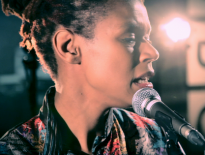Frieze New York Contemporary Art Fair

Randalls Island is a green piece of Manhattan real estate separating the East and Harlem Rivers. In the century after the city acquired the land in 1835, it was the site of a poorhouse; a reformatory for juvenile delinquents; and a hospital for “Idiots and Children.”
By the 1930s, when the urban planner/wrecker Robert Moses set up an office on the island, those unhappy institutions were gone. In the 1990s, a spiffy multipurpose sports complex took their place. As if to top off the gentrification process, this weekend and on Monday the island will serve as pied-à-terre to Frieze New York, a contemporary art fair that originated, with wild success, in London nine years ago, and is now introducing a local franchise.
The gentrification of contemporary art itself is an old story in two parts. Part one is about a 20th-century model of an avant-garde, with artists as feisty cultural delinquents and idiot savants who set themselves outside the mainstream to make baffling things and think deep thoughts.
In part two, set in the 21st century, the model has changed. Now artists, whether they know it or not, are worker bees in an art-industrial hive. Directed by dealers and collectors who dress like stylish accountants, they turn out predictable product for high-profile, high-volume fairs like Frieze.
The fair is nothing if not smoothly run, starting with the logistics of getting there, which is fun. You can board a ferry from a pier at 35th Street for a 20-minute ride up the East River, or catch a school-bus shuttle on Third Avenue between 125th and 126th Streets that will drive you to the island. The fair itself — nearly 180 galleries, along with restaurants, bars, V.I.P. lounges, an auditorium and a bookstore — is installed in one long, curvaceous white tent.
The architectural equivalent of a white stretch limo, the tent was designed by the Brooklyn firm SO-IL, and has the advantage of letting in lots of natural light, which makes the art look good. It’s also fairly roomy. The three parallel rows of booths feel commodious and flexible, an improvement over the city’s annual Armory Show, where everyone’s always penned in tight, and from which Frieze took inspiration and learned much.
Like most fairs its size, this one is technically international, with a small handful of participants from Asia, and one each from Africa and the United Arab Emirates. Mostly, though, it’s European and American big guns, interspersed, for the sake of edginess, with a certain number of newish galleries and a special section, called “Frames,” made up of solo installations by artists represented by galleries that opened in or after 2001.
With all of this demographic leveling, and suffused light, and organizational finesse, what do you get? A standard big art fair that just feels a bit cooler than most.
Some galleries have tried hard to create a look or an atmosphere. (There’s an incentive: a $10,000 prize to the booth judged, by a Frieze art-star jury, to be the most innovative.) In general, simple works well. A solo hanging of Marieta Chirulescu’s pale abstract paintings at Micky Schubert from Berlin create a reflective mood; a floor-to-ceiling installation of little, colorful Joshua Abelow paintings at James Fuentes have similarly uniform effect, in this case of nonstop visual chatter.
Being by temperament a content-seeker, I find myself drawn to spaces with work that seems to require close looking and reading. I was rewarded at Broadway 1602 with a selection of small pieces by several remarkable female artists who had visibility decades ago, only to drop out of sight. One of them, Alina Szapocznikow (1926-73), who worked in ceramics, has recently come back into view. Others — Evelyne Axell, Penny Slinger, Nicola L. — are waiting in the wings, and this gallery is doing its share to prepare the stage for their re-entry.
Experimenter, a gallery from Kolkata, India, has in interesting, topically inflected lineup in Naeem Mohaiemen, Bani Abidi and the Turner-prize nominated Otolith Group.
And at Moscow’s Regina Gallery I was able to renew, and extend, my acquaintance with Evgeny Antufiev, the young Siberian artist whose doll-like stitched figures were a highlight of the New Museum’s great “Ostalgia” show last year.
The booths I’ve mentioned are all on the small side. So are the solo installations that make up the “Frame” section, located at almost the exact center of the tent. The array here is attractively varied, from stylistically quite different photographs by Michelle Abeles and Talia Chetrit to jewelry made from gold and recycled trash by Liz Glynn, to a concrete sculpture by Justin Matherly that has the bulk and muscle of a shattered and illogically reassembled “Laocoön.”
We get compelling tours of German painters from the 1980s at Michael Werner, and of current Romanian figurative work — by Razvan Botis, Ion Grigorescu (also in “Ostalgia”) and the team of Mona Vatamanu and Florin Tudor — at Andreiana Mihail Gallery from Bucharest. Both displays provide valuable updates, which is the main function of art fairs for many of us.
As is usually true these days, there’s a heavy sampling of abstract painting, a lot of which suggests sleek, generic hotel-chain filler. And inevitably, there’s a fair share of plain, gross, look-at-me stuff, on the order of Anselm Reyle’s wall-filling, Warholy whatsits.
Somebody, someday will write a social history of 21st-century art fairs, which will also be a history of the art of an era. I hope that history will give a sense of how engulfing the phenomenon is and of the Stockholm syndrome-like mentality it has produced: almost everyone says in private how they hate fairs, but everyone shows up at them, smiling anyway, and hangs out, when they could be visiting studios, or going to offbeat spaces, or taking trips, to Kolkata, say, or Bucharest, or Rio, or Cape Town, where all kinds of serious, in-touch-with-life work is going on.
But the fairs say: don’t bother. We’ll do the editing. We have what you need.
As a peripheral attraction for its New York debut, Frieze commissioned several projects, some of them interactive, and all but one outside the tent. The one inside is of particular interest. For it, the New York artists John Ahearn and Rigoberto Torres were invited to make, in a workshop environment, plaster portrait casts of visitor’s faces in very much the same way that they made portraits of their neighbors in an embattled South Bronx in the late 1970s and early 1980s.
These artists go back to the wild-and-woolly avant-garde model, but here they are, temporary guests of the new one.
And whatever you think of the current Whitney Biennial, which has been greeted with the usual complement of cheers and jeers, it too, in a way, sets its sights on an earlier model of modest-size, personalized art-making, but ends up being the most fair-friendly Biennial in years. Most of its carefully calculated approximations of outsider weirdness make for ideal, booth-size, cash-and-carry retail.
A final note: tickets for admission to New York Frieze are available only online. This effectively denies entry to anyone without computer access, which means a not-small number of New Yorkers. Outside, after I saw the fair, I thought of the poor, the crazy and the criminal who once, whether they wanted to or not, called Randalls Island home. Their ghosts must be looking at that big white worm of a tent, at the Wall Street suits, and at this stuff called art that you can do nothing with but buy and sell, with wondering distrust. I’m looking at it all that way myself.
Frieze New York remains at Randalls Island Park through Monday. Tickets available online at friezenewyork.com.





